
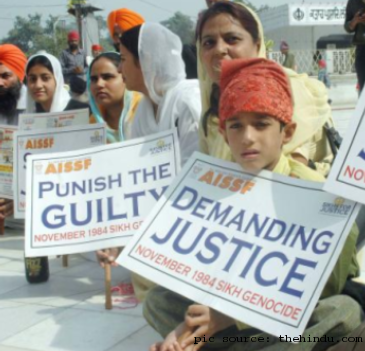 On Tuesday (November 3rd, 2009), various Panthic groups (‘radical’ Sikh organizations, if you follow Indian newspapers) called for a peaceful shutdown of stores, businesses, and state services to protest the continued impunity in which the perpetrators of the Indian Government-orchestrated pogroms in 1984 still roam free today.
On Tuesday (November 3rd, 2009), various Panthic groups (‘radical’ Sikh organizations, if you follow Indian newspapers) called for a peaceful shutdown of stores, businesses, and state services to protest the continued impunity in which the perpetrators of the Indian Government-orchestrated pogroms in 1984 still roam free today.
The ‘bandh’ was an overwhelming success in terms of its immediate call to action, although the larger purpose of its calling will probably continue to yield little results.
The strike call was given by the Dal Khalsa and was supported by the Khalsa Action Committee (KAC), Damdami Taksal, Delhi Sikh Gurdwara Prabandhak Committee (DSGPC), All India Sikh Students Federation (AISSF) and Shiromani Panthic Council.
 History often remembers transformative figures through the public images they become. Glimpses and insights into their private lives are rare. So an interview with Sant Jarnail Singh Bhindranwale’s son is a rare treat.
History often remembers transformative figures through the public images they become. Glimpses and insights into their private lives are rare. So an interview with Sant Jarnail Singh Bhindranwale’s son is a rare treat.
Ishar was just five years old when Jarnail Singh Brar was anointed the 12th jathedar of the Damdami Taksal. He left home and adopted the “Bhindranwale” after the village of Bhindran Kalan where the sect was originally located. “After that we only saw our father at his satsangs,” Ishar said. “But we were well looked after.” Did he miss his father? “From the family point of view I was sad, but from a Sikh point of view I was very happy.” The Jalandhar editor waved a laminated family photograph at me—a very young Ishar Singh with his eyes shut, an oddly self-conscious Sant Bhindranwale, his younger son Inderjit, his wife Pritam Kaur. [Outook India]
Ishar is the oldest of Bhindranwale’s two sons, and now a land realtor near Amritsar. He was 12 yrs. old during Operation Bluestar, studying Gurbani under Mahant Jagir Singh at Akhara village near Jagraon. [OI]
How can Punjabi traditions, environmental awareness, and women’s space all be nurtured at the same time? Trinjan. Two organizations in Punjab recently teamed up to begin this. The Kheti Virasat Mission (KVM), 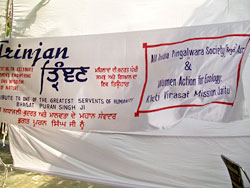 working towards sustainable agriculture, conservation of natural resources, environmental health and eco-sustainable technologies teamed up with Pingalwara, the org started by Bhagat Puran Singh in Amritsar as a refuge to care for those who had nowhere left to go. [Hat tip: Big B!]
working towards sustainable agriculture, conservation of natural resources, environmental health and eco-sustainable technologies teamed up with Pingalwara, the org started by Bhagat Puran Singh in Amritsar as a refuge to care for those who had nowhere left to go. [Hat tip: Big B!]
These two groups combined efforts to revive the lost tradition of Trinjan. KVM created a new initiative- the Women Action for Ecology to encourage women’s participation in an agro-ecological revival movement in Punjab.
From pictures on Pingalwara’s site, it seems that Pingalwara may have envisioned this first attempt at reviving Trinjan to be more a display of Punjabi traditions- natural foods, arts, and crafts. However a report from KVM envisions a much more active and central role for women in reviving Trinjan.
Since women are the first and worst victims of the agro-ecological crisis here and elsewhere, women need to work towards the mitigation process, for their own sake and for the sake of the community. Trinjan is an effort to mobilize women to appreciate their own traditional wisdom and role in the preservation and conservation of the environment in Punjab. Platforms for sharing of knowledge and spreading of practice are the main tool for empowerment of women in Trinjan. (emphasis added) [KVM report]

Toronto Star reporter Raveena Aulakh, posing as an expectant mother, is handed bags of pills in an industrial area in Mississauga by Kanwar Bains, news editor of a Punjabi-language newspaper.
Just in case the rest of the world didn’t know what a sorry state Punjab was in with respect to its gender imbalance, there has been two headline reports from Canada’s biggest newspapers in recent weeks. The first deals with the problem in India and the second talks about how the problem has been exported to Canada.
The first from the Globe and Mail entitled “Land of the Rising Son”, examines how India has responded to the decline of female births. There’s two sad learnings from the article. One is that Punjab is still in the worst position with respect to male-female gender ration and the second is that an individual’s level education has does little to reverse generations of discrimination.
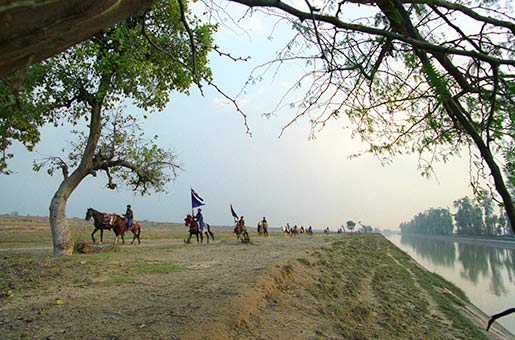 Environmental issues have taken a backseat for way too long. Even under this administration – which promised to create jobs through new and clean energy initiatives, and rejoin the international community to reduce worldwide carbon emissions – environmental issues have taken a backseat to health care overhaul and reviving our frail economy.
Environmental issues have taken a backseat for way too long. Even under this administration – which promised to create jobs through new and clean energy initiatives, and rejoin the international community to reduce worldwide carbon emissions – environmental issues have taken a backseat to health care overhaul and reviving our frail economy.
Crisis
We should be especially concerned because the consequences of misusing resources are all too clear in the near-crisis state that Punjab’s ecology is currently in. Those who still have relatives in Punjab know that this past summer, electricity outages were a daily occurrence and lasted 8 hours at a time – the worst in many years. These shortages in electricity occur because the government subsidizes electricity for farmers so that it’s free or nearly so and they can pump water for irrigation to their heart’s content. However, this leads to electricity shortages, overuse of waterpumps, and water wastage. [Forbes-India]
An article in Forbes-India asked yesterday, “Is India running out of water?” For Punjab, the answer is yes.
And Punjab, as the breadbasket of the most populous nation in the world, may be an indicator of other similarly situated agricultural communities.
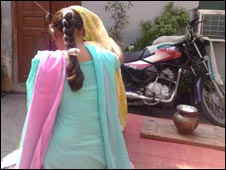 One of our goals on The Langar Hall is to raise awareness about issues affecting our community around the globe. Whether or not we identify or relate to these specific issues may not be as important as much as the acknowledgement that these issues do occur and that individuals and families and even children are affected. We hope that by raising awareness we can begin, as a community, to stand up against injustice in all its forms.
One of our goals on The Langar Hall is to raise awareness about issues affecting our community around the globe. Whether or not we identify or relate to these specific issues may not be as important as much as the acknowledgement that these issues do occur and that individuals and families and even children are affected. We hope that by raising awareness we can begin, as a community, to stand up against injustice in all its forms.
A recent article from the BBC reports that, according to campaigners in Punjab, British Asians are hiring contract killers to carry out up to 100 murders in India each year. One of the most well known cases is that of Surjit Athwal, a British Sikh woman who disappeared in Punjab in 1998. Eventually it was revealed that she had been murdered in a so-called honor killing after her in-laws discovered that she planned to divorce her husband. They had hired criminals in India to kill her. She was strangled and her body dumped in a river. Her brother, Jagdeesh Singh, now campaigns for other victims’ families.
“I think Surjit’s case exposed for the first time in this country overseas outsourced killings. How the Punjabi community, settled in Britain, send their females back to the land of origin, in the full knowledge that they can have them murdered easily, swiftly and efficiently.” [link]
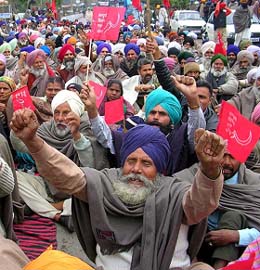 While I do value the role films play in telling stories, I wonder if at times it can do more harm than good. I recently heard about a new bollywood movie called Kisaan and had the opportunity to watch it last night. I had been told the movie was about farmer suicides in punjab and while i was aware it was a bollywood production, I definitely made time to watch it as it is such an important issue.
While I do value the role films play in telling stories, I wonder if at times it can do more harm than good. I recently heard about a new bollywood movie called Kisaan and had the opportunity to watch it last night. I had been told the movie was about farmer suicides in punjab and while i was aware it was a bollywood production, I definitely made time to watch it as it is such an important issue.
The movie touched upon issues such as the role illiteracy and dowry play in the lives of farmers – the reality of poverty overpowered by the hope of prosperity. These are important issues and should be discussed. Films are an important tool to utilize in order to raise awareness about such issues.
Suffice it to say, Kisaan is a bollywood production and is distracted by it’s commitment to bollywood requirements. I can’t say i wasn’t disappointed – this is such an important issue which needs to be explored. While i commend the director for attempting to raise the issue, i do question if this genre of film was the best vehicle for it. The issue was so entangled in the film, mixed in with songs and awkward jokes, that i can’t imagine how serious the issue will be taken.
 When hallowed grounds make way for fairway greens, you have a lens into contemporary elite culture in Punjab. Tales of the loss of our historical materials and architecture form a common topic here in The Langar Hall as throughout conversations of Sikhdom. Destruction of historic Gurdwaras for the vanilla blandness of marble monstrosities is well known.
When hallowed grounds make way for fairway greens, you have a lens into contemporary elite culture in Punjab. Tales of the loss of our historical materials and architecture form a common topic here in The Langar Hall as throughout conversations of Sikhdom. Destruction of historic Gurdwaras for the vanilla blandness of marble monstrosities is well known.
Although I am hardly a fan of the Times of India, a recent article did get me to think.
The article describes a hallowed space that will soon become a golfing green. The history of that space is as follows:
Barely 20 km away from Chandigarh, off Kharar-Landran road, lies Chhappar-Chiri village — once known for its plentiful ponds and mangroves on the banks of Patiala Ki Rao — where in 1710, the brave Banda Singh, anointed general of the Khalsa army by Guru Gobind Singh and sent to stop the tyranny of Mughals, defeated the army of Wazir Khan, the subedar of Sirhind who had ordered the killing of Sahibzada Zoravar Singh and Fateh Singh by bricking them alive. Khan was put to death and his body dragged to Sirhind, about 25 km from the village, before the Khalsa army proceeded to decimate the town.[link]
Blogged by: Amol Singh
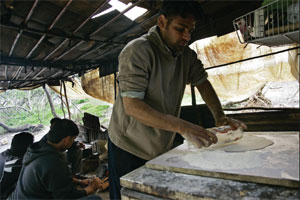 For many of us, the ability to live our lives in the diaspora is a direct consequence of journeys emanating from Punjab. Our fathers and mothers left economic insecurity and political uncertainty and set sail on ships and planes to far off backwaters in hopes of finding routes to the holy grails of North America and Europe. In today’s grapevine, it has become a casual affair to hear of Panamanian border crossings and Cuban raft rides. In a remarkable event, Spanish documentary film makers Alberto Garcia Ortiz and Agatha Maciaszek are currently in the process of filming the harrowing story of 54 Punjabi’s; who stranded in the Spanish city of Ceuta and fearing detention and deportation have fled and taken up refugee in the hills of the city.
For many of us, the ability to live our lives in the diaspora is a direct consequence of journeys emanating from Punjab. Our fathers and mothers left economic insecurity and political uncertainty and set sail on ships and planes to far off backwaters in hopes of finding routes to the holy grails of North America and Europe. In today’s grapevine, it has become a casual affair to hear of Panamanian border crossings and Cuban raft rides. In a remarkable event, Spanish documentary film makers Alberto Garcia Ortiz and Agatha Maciaszek are currently in the process of filming the harrowing story of 54 Punjabi’s; who stranded in the Spanish city of Ceuta and fearing detention and deportation have fled and taken up refugee in the hills of the city.
In the Faridkot centre… Harmanbir Kaur, 15, was rocking gently backwards and forwards. When her test results came back, they showed she had 10 times the safe limit of uranium in her body. Her brother, Naunihal Singh, six, has double the safe level. [link]
An article in The Observer discusses the link between the dramatic rise in birth defects in Punjab and pollution from coal-fired power stations. Many of the children are being treated in Faridkot and at the Baba Farid centers for special children in Bathinda, where there are two coal-fired thermal plants. Staff at these clinics had noticed an increase in the incidence of severely handicapped children who were born with hydroencephaly, microencephaly, cerebral palsy, Down’s syndrome and other complications. They suspected environmental poisoning.
The healthcare workers rightfully voiced their concerns about this and wondered, if some children were being treated, how many more were being affected? As with governments’ other dirty little secrets, staff at the clinics were visited and threatened if they spoke out. In addition, a visiting South African toxicologist arranged for tests to be carried out and found that the children had massive levels of uranium in their bodies, in one case more than 60 times the maximum safe limit. The scientist was later warned by the authorities that she may not be allowed back into the country.
Blogged by: Amol Singh
A new generation of Sikh youth is coming up to age in a diaspora still unable to decently reflect or respond to the tragedies that have befallen the Panth. Although, cognizant of the injustices done to Sikhs, we have categorically failed at identifying a half-way legitimate vision for our institutions.The following is a humble attempt at one such institution, hinted at by an older post.
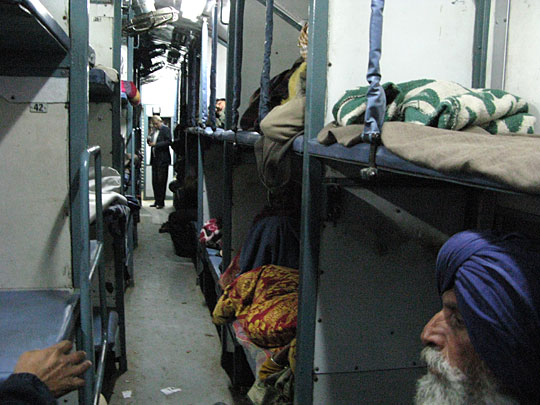
Much of Punjab’s money flow is due to remittances from family members scattered across the globe. However, remittances are easily subjected to ebb and flows in the world’s markets and these flows of money to Punjab can be easily disrupted by economic downturns. In addition, Punjab receives little attention from international development agencies. For instance, there are currently a total of two World Bank projects targeting the state. Unfortunately, Punjab is receiving more attention from MNC’s and the introduction of SEZ’s inside the state is unnerving to many who believe that they foreshadow an increase in neoliberal market practices favoring large corporations.
In my opinion, Punjab needs an insertion of human and financial capital that can ignite a grassroots based economic revival that quantifies development on the creation of ecologically friendly infrastructure. To being the process for these goals, I propose the creation of a development bank.
With so few details, it may be premature to begin writing some thoughts, but that hasn’t really stopped me before.
Although each incident has its own genesis, with the recent spate of shootings this week, a discussion forum is needed. First I begin with an analysis of various Indian media coverage and then shift to a broader discussion then just the two events.
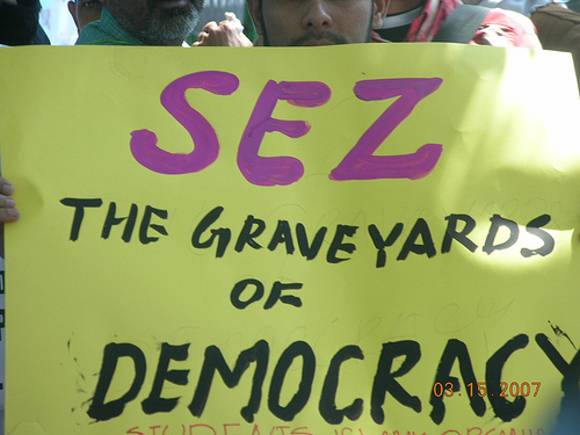 Earlier this month TLH discussed how the unseasonably dry summer in Punjab is threatening its agriculture and economy. This week, the Punjab Assembly adopted a resolution authorizing the development of additional Special Economic Zones, or SEZs, while streamlining and supporting the existence of pre-existing SEZs.
Earlier this month TLH discussed how the unseasonably dry summer in Punjab is threatening its agriculture and economy. This week, the Punjab Assembly adopted a resolution authorizing the development of additional Special Economic Zones, or SEZs, while streamlining and supporting the existence of pre-existing SEZs.
SEZs are not entirely new to Punjab. In 2006, Punjab cleared thirteen (13) SEZs for development and approval, and the proposal was approved by the Indian central government in 2007. The current number of “greenlit” SEZs in Punjab currently totals 12, but the number could increase extensively.
Punjab has been divided numerous times. Both during and after partition. Anita Rau Badami eloquently writes, “First it was Partition and half our land disappeared. Now our own leaders are chopping it up like a piece of meat”. The Punjabi language was one thing we hoped would cross borders despite all the “chopping”. Ultimately, it was the language of the Punjabi soul regardless of how political borders were drawn.
However, the Punjabi language is being lost. It has been granted “second language status” under the Official Language Act. Although extremely disappointing that Punjabi is given a 2nd status-one walks away thinking at least it still has some official status. However, Punjabis’ actions are speaking louder than our words when Punjabi is virtually not being taught in schools or used in official administrative work in Chandigarh. This abandonment is occurring despite the availability of financial assistance from the Central Government government to hire Punjabi language teachers. This financial assistance is supposed to cover the entire financial costs of language teachers’ appointments and salaries.
Prabhjot Singh writes for “The Tribune” that the Human Resource Development Minister Kapil Sibal (a Punjabi himself) stated:
None of the northern states other than Himachal Pradesh had applied for financial assistance for the appointment of Punjabi teachers during the past three years. Only Himachal Pradesh had obtained a grant in October 2007 for the appointment of 100 Punjabi teachers.
Punjab’s historical economic dominance is well known. We hear about it when studying The Raj and the years following it. However, we also know that Punjab’s current economic position does not provide many new jobs for college graduates. Thus, these graduate are looking for jobs outside of Punjab-often in Western countries. Recently, there was a comparative study by the Economics Department at Punjabi University, Patiala to provide research data for these conclusions. This study “… revealed that Punjab is lagging behind for providing employment to its educated and skilled people in the last two decades”.
Co-blogged by Sundari and Camille.
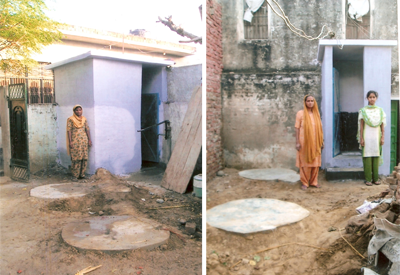 While many LangarHall moments are spent bringing awareness to adverse issues impacting our community, we believe it is equally important to highlight solutions to these problems. There are several people and organizations who are working to improve the social development and health of communities around the world. One example of a simple yet life changing initiative is a toilet. Yes, toilets. A facility taken for granted by many and something that over 2 million people around the world are in need of. The Punjab Lioness Toilet Foundation was created to provide awareness of communities in need of basic toilet and sanitation facilities,
While many LangarHall moments are spent bringing awareness to adverse issues impacting our community, we believe it is equally important to highlight solutions to these problems. There are several people and organizations who are working to improve the social development and health of communities around the world. One example of a simple yet life changing initiative is a toilet. Yes, toilets. A facility taken for granted by many and something that over 2 million people around the world are in need of. The Punjab Lioness Toilet Foundation was created to provide awareness of communities in need of basic toilet and sanitation facilities,
As a family initiative the Punjab Lioness Toilet Foundation wants to empower people to take action in providing basic toilet needs to less fortunate families in Punjab, India. The foundation was started in the memory of our late mother Pritam Kaur Bahia who passed away on November 18th, 2004. She was known as the “Sherni” a.k.a. Lioness. [link]
Founded by Mandip Kaur Sandher, one of the goals of the organization is to break the “toilet taboo,” which comes from people’s lack of comfort speaking about a subject which they consider dirty. This stigma is impacting global health and as a result, basic sanitation needs for hundreds and thousands of people around the world.
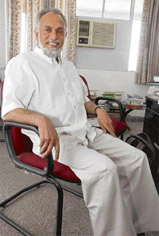 It is with saddness that we report on the passing of Ram Narayan Kumar, a human rights activist who actively and vocally worked on the dissapearances and killings in Punjab. He was 56 years old.
It is with saddness that we report on the passing of Ram Narayan Kumar, a human rights activist who actively and vocally worked on the dissapearances and killings in Punjab. He was 56 years old.
Kumar was a born human rights activist. He had engaged himself with human rights activism since 1975 when he was jailed for 19 months for protesting against the imposition of emergency. Though he belonged to Andhra Pradesh, his conscience dragged him to protest against the wide spread human rights violations in Punjab. There he co-founded Committee for Coordination on Disappearances in Punjab (CCDP) and co-authored a voluminous edition called ‘Reduced To Ashes’, a compilation of about 600 cases of human rights violations in the state. This report prompted the National Human Rights Commission to take cognizance of the large scale custodial disappearances and deaths in Punjab during that decade. [link]
In Terror in Punjab, Ram Narayan Kumar traces the roots of Sikh dissent in India that eventually culminated in the armed confrontation in 1984. Kumar also addresses the post-1984 period of Sikh militancy and the Indian state’s success in countering this militancy.
Kumar…documents and pays tribute to the Akali tradition of non-violence. He refers to the Akali Dal’s peaceful struggle for a Punjabi-speaking state, and makes an important point of historical value by highlighting that the Akali agitation of the 1980s for Punjab’s demands constituted “the largest non-violent movement in the sub-continent, including both the colonial and the independent periods, with over 150,000 volunteers courting arrest within a period of three years.” [link]
Ram Narayan Kumar worked extensively with several human rights organizations, including Ensaaf and his contributions to the field of human rights justice were invaluable. He played an important role in defending the rights of families who had been affected by the violence in Punjab. We will remember his work, his contributions and his value to the very important work being done for justice in Punjab.
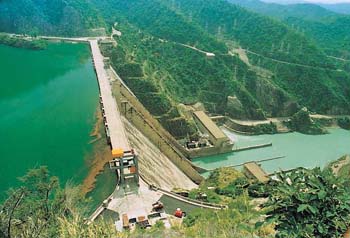 International news outlets are a flutter with the latest: in the wake of an unseasonably hot, dry summer, the Bhakra Beas Management Board has decided to cut irrigation water to Punjab, Rajasthan, Haryana and Himachal Pradesh. The Punjab government has tried to alleviate the demand for water by curtailing its use of electricity, as well (many segments of the state run on hydroelectric power). Officials have a delayed monsoon has kept the reservoir behind the dam from being recharged. They insist the heat, and dryness, are unrelated to El Nino and a number of other weather-related phenomena.
International news outlets are a flutter with the latest: in the wake of an unseasonably hot, dry summer, the Bhakra Beas Management Board has decided to cut irrigation water to Punjab, Rajasthan, Haryana and Himachal Pradesh. The Punjab government has tried to alleviate the demand for water by curtailing its use of electricity, as well (many segments of the state run on hydroelectric power). Officials have a delayed monsoon has kept the reservoir behind the dam from being recharged. They insist the heat, and dryness, are unrelated to El Nino and a number of other weather-related phenomena.
But what if the impending drought and the water shortage are products of a more permanent weather shift? What if they are related to climate change?
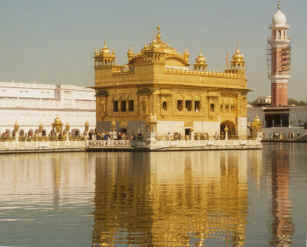 For some Sikhs in Punjab, apparently two Harmandar Sahibs. Or at least that’s the argument between the SGPC and a group of Sikhs. The SGPC argues that a group of Sikhs are building a replica of Harmandar Sahib, and that they stridently oppose any “imitation” gurdwaras (my phrase, not theirs).
For some Sikhs in Punjab, apparently two Harmandar Sahibs. Or at least that’s the argument between the SGPC and a group of Sikhs. The SGPC argues that a group of Sikhs are building a replica of Harmandar Sahib, and that they stridently oppose any “imitation” gurdwaras (my phrase, not theirs).
The Sikhs, who are definitely building a gurdwara (but whether or not it is intended to be a replica is contested), argue that the SGPC is trying to stir up trouble and adopting wedge politics tactics to scramble for power.
At first I read this story and thought to myself, “Wow, that is wacky.” But the longer I’ve reflected on it, the more I have to ask — REALLY???
This week I came across a couple of interesting stories out of the UK about how 1984 has since affected Sikhs. BBC Asian Network is currently previewing a radio documentary, hosted by Pops from Tigerstyle, discussing the impact Operation Bluestar has had on British Sikhs. The documentary discusses what impact, if any, 1984 has had on the Sikh conscience and the political activism that emerged. During that year, weekly covers of Des Pardes portrayed pictures of dead Sikhs – images that have stayed with many of us over the years. There existed a sense of hopelessness many Sikhs felt after only reading about and hearing of what was happening in Punjab. As one young Sikh woman states, “a record number of people took Amrit in that year”.
Before 1984 there were fears within the British Sikh community that young Sikhs, in particular, were assimilating into British way of life. A the time what Bluestar did was galvanize the community. .. and generally Sikhs were put on the spot by Operation Bluestar globally and in 1984, in the immediate aftermath, there was a great reassertion of Sikh identity – the visual representation of Sikh identity.
In a Guardian article yesterday, Sunny Hundal discusses how Operation Bluestar and the subsequent events have impacted Sikhs since.
Almost every year groups gather in London to commemorate these events and raise awareness of people still missing or locked up. Sometimes, the Indian flag is torched. In one report produced for the anniversary, the whole episode it is described as the “Sikhs’ Kristallnacht”. But while these facts are well documented and constantly discussed, there is less acknowledgement of how the episode has affected Sikhs since. [link]
He goes on to highlight three ways 1984 is still impacting Sikhs,
